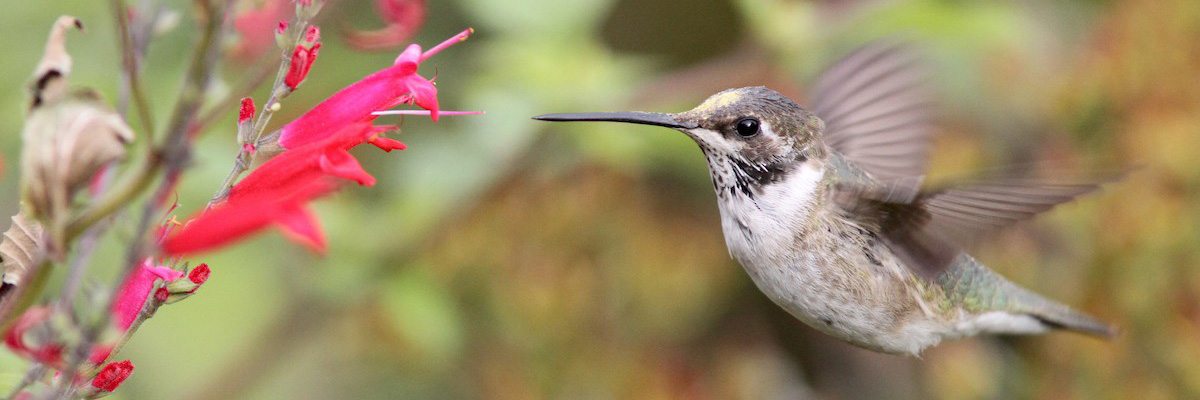When you don’t know something, you look it up. Perhaps you Google it, or go directly to Wikipedia. If you’re of a certain age, you used to go to a library and find the row of identical, black and gold books of Encyclopedia Britannica. You may even ask someone, but you go to a trusted source. The collection at the Macaulay Library is a trusted source of information that scientists refer to about animal behavior and vocalizations of a species that may be unique enough to identify the species.
When researchers Brian Klingbeil and Michael Willig1 from the University of Connecticut needed to know which bird species they recorded for their study on how the composition of different landscapes determines biodiversity, they used the Macaulay Library. They remotely recorded sound at multiple sites and then compared these recordings to the collection in the Macaulay Library to identify the bird species at each location. The identified bird species were a part of the measurements for biodiversity on different landscapes, or types of land use.

This reference library would not be available to Klingbeil and Willig without the efforts of other researchers, like Emiliano Depino and Juan Areta at the Instituto de Bio y Geociencias del Noroeste Argentino. In their study of the habitat distribution of red-and-white and rufous-sided crakes2, they recorded duetting male and female pairs of each species. In dense vegetation, where visual communication is ineffective, these trilled duets signal to other crakes the boundaries of the pair’s territory. These recordings were archived at the Macaulay Library, so now other researchers, like Klingbeil and Willig, can refer to them. And when researchers refer to them, the recordings have additional valuable information about the behavioral context, location, and date of the calls.
Biodiversity Depends on the Make Up of the Land
Klingbeil and Willig1 used their bird identifications in their work on how the composition of different landscapes determines biodiversity. Landscapes, for ecologists, refers to land that is modified by humans in various ways by human activities, including different degrees of forested, agricultural, and urban areas, and the ecosystem interaction between the land types and the plants and animals. In Klingbeil and Willig’s paper, published in Biodiversity and Conservation, the researchers assigned ecosystem functions to each identified species from their study sites, such as what food the species ate, where it forages for its food, and if it was a migrant or resident species to the area. Using standards established in the scientific community, they measured the biodiversity based on the numbers of different species at a site and the evolutionary relationship between species. When they looked at the different dimensions of biodiversity and the relationship to different measurements of the landscape, they determined that the relationship is complex; not all birds have similar responses to the diversity of landscapes at different scales. For example, as the diversity of the landscape increases, so does the diversity of resident bird species. However, migrant bird species diversity does not increase; it is not related to the landscape diversity. Heterogeneous, or diverse, landscapes have multiple land uses, including urban areas, forests, farms, fields, rivers, and heterogeneity will be a better predictor of biodiversity. But the caveat is that the scale of your area will change your measured results. Think of looking at a satellite image of your town in Google maps. Draw circles around the forests and urban areas. Now look at a satellite image of the state you live in and do the same. You probably could not differentiate the woods behind your house in your neighborhood from that scale—you would probably just see the town, if your town is urban enough to see at that scale. So land managers and people who make conservation decisions need to take this into consideration.
My Habitat, My Territory

Red-and-white crakes (Laterallus leucopyrrhus), and rufous-sided crakes (Laterallus melanophaius) can be found on the coast of the Río de la Plata in Argentina, making them sympatric (occurring in the same geographic region), but do not share the same habitat (they are not syntopic). Published in the Journal of Ornithology, Depino and Areta2, tested if the crakes were segregated in different habitats because they were physically best-adapted to the habitats, or the crakes competed with each other to draw up territories that excluded the other species. The researchers played trills of male and female crakes duetting, or calling to each other, at various points in the dense bulrush habitat of the red-and-white crakes, and the more open coastal humid scrub habitat of the rufous-sided crakes. They were looking for which species would respond and be found in the different habitats throughout the year. Both species of crakes responded to the trills of their own species and the other species, but each species was more frequently encountered on their preferred habitat, so interspecific (between different species) competition for territory is low. When the researchers measured the bill and leg (tarsi) features of the crakes, they concluded that the crakes had physical differences that are better adapted to moving through and feeding in their preferred habitat. Competition for territory between crake species is not excluding a species from a habitat, instead, the two crake species are in their preferred habitat, based on their physical adaptations. However, at the boundaries of these habitats, red-and-white and rufous-sided crakes may be competing for territory, but the researchers can’t tell you which species to bet on winning.


